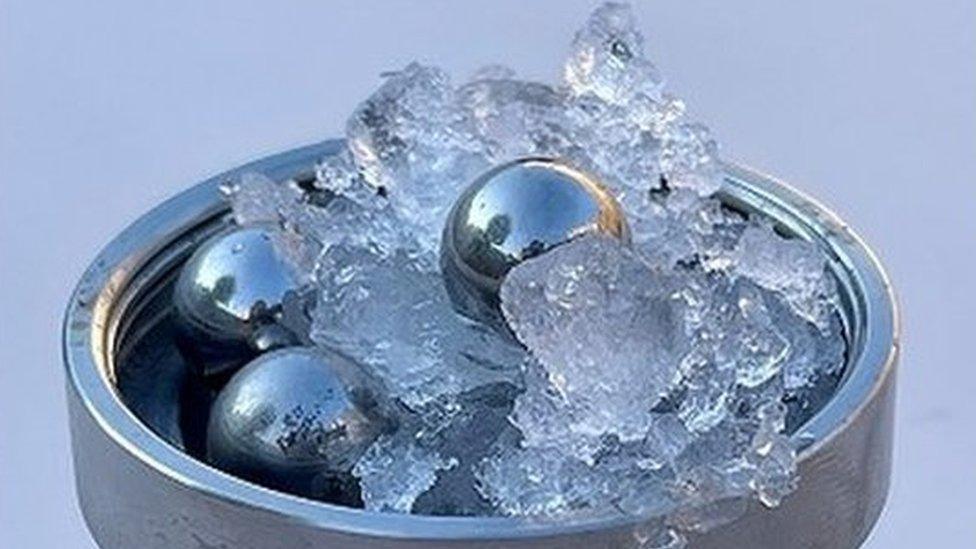FIVE cool facts for the cold weather
- Published
- comments
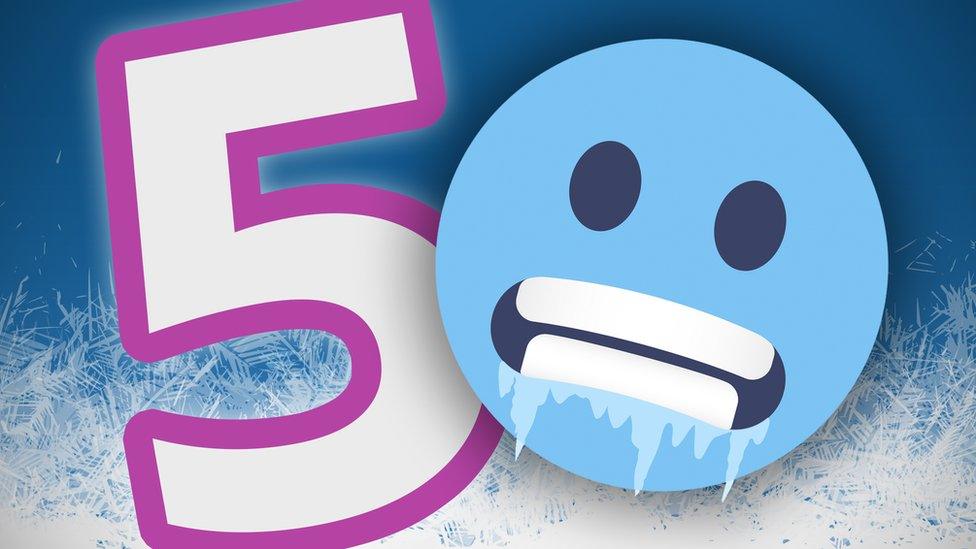
Five cool facts for the cold weather
The UK has been facing some icy weather and temperatures across the country have dropped well below freezing in many places.
In a village in Cumbria temperatures reached a very cold minus 11.1 degrees Celsius on Wednesday.
And for most of the UK, it was the coldest night of the winter so far.
The extreme chill got us in the Newsround office pondering some big questions about the cold weather.
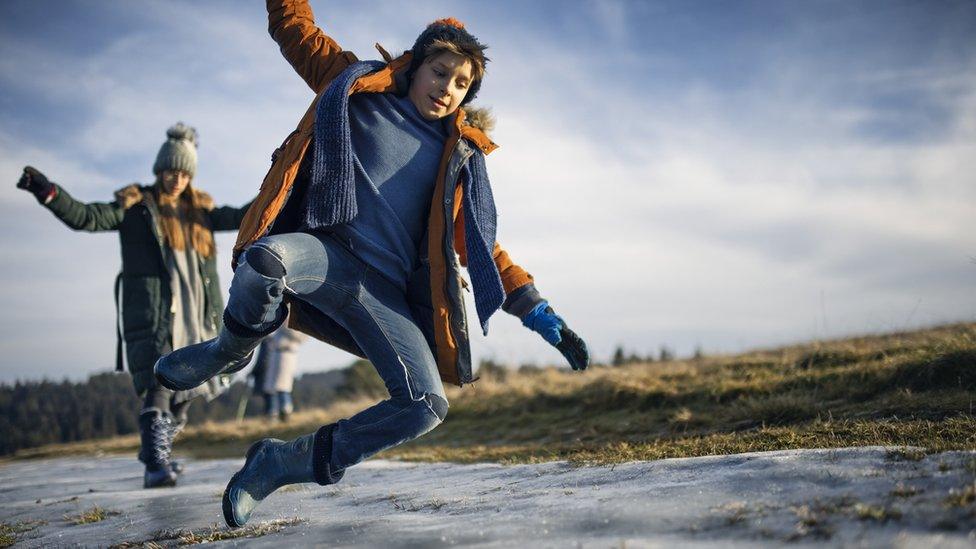
Is ice always slippery?
Slippery ice is something that can make a short walk to school or work feel perilous.
But did you know, the colder the ice is, the less slippery it becomes?
That's because its surface is more likely to stay solid, making it easier for our shoes to grip.
However, as the ice begins to thaw its surface becomes covered in a layer of water.
The water moves easily on the ice's smooth surface, which means there's less for our shoes to grip on when we walk across it.
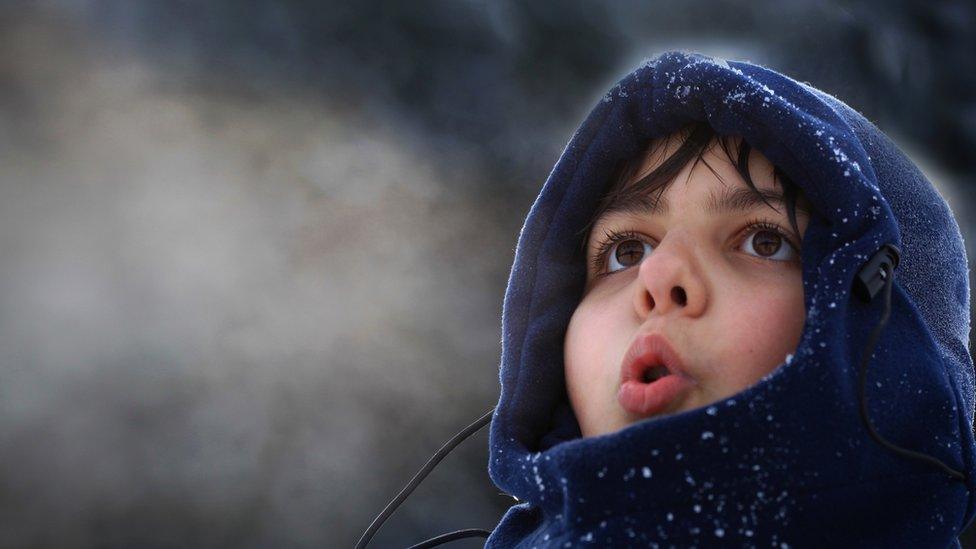
Why does our breath steam when it's cold?
The internal temperature of our bodies is a lot warmer than the cold air outside.
So when we breathe out, the air that leaves our body is very warm.
But once it hits the cold air outside, our warm breath cools rapidly creating water vapour.
The effect is similar to when the bathroom steams up after a nice, hot shower.
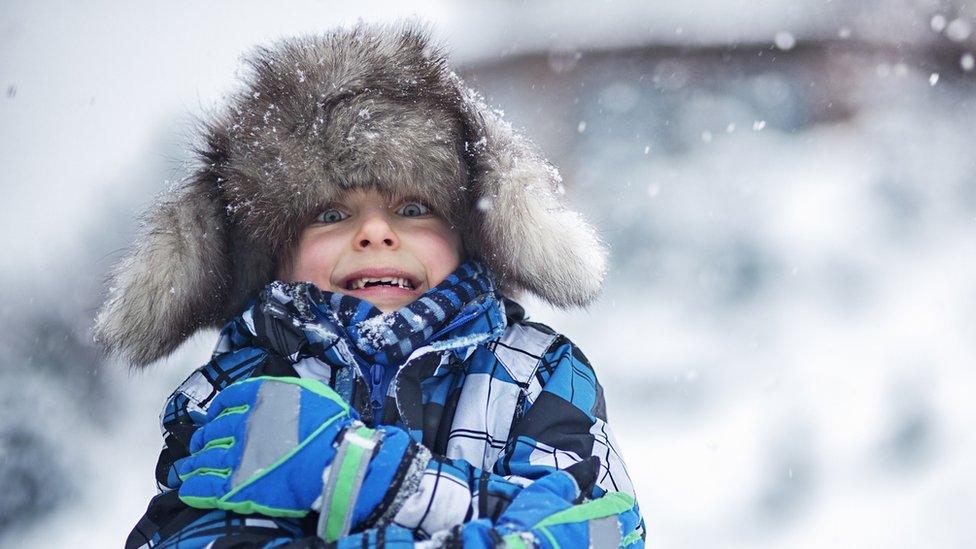
Why do we shiver when it's cold?
When receptors in our skin sense cold temperatures, signals are sent to our brain that the body needs to do something to stay warm.
The brain then sends a message to some of our muscles, telling them to tense and relax very quickly, which appears to make our whole body tremor.
Rapid movement like this helps keep our body warm when we're feeling chilly.
So if you find yourself feeling cold, it's not a bad idea to do a few quick star jumps!

A cold ice cream can have the same affect as cold weather on our teeth
Why can your teeth hurt in freezing temperatures?
Our teeth can cope with temperatures of more than 1,000 degrees Celsius, thanks to a very hard surface layer called enamel that protects them.
But sometimes cold weather can hurt our teeth, and that's because teeth expand or shrink depending on the temperature.
These changes can form small cracks in your enamel, exposing the more sensitive part of your teeth where your nerves are.
It's at this point your teeth can hurt when they come into contact with very cold or very hot things.
If your teeth often hurt when it's cold, speak to a dentist who can show you how to better protect your enamel.
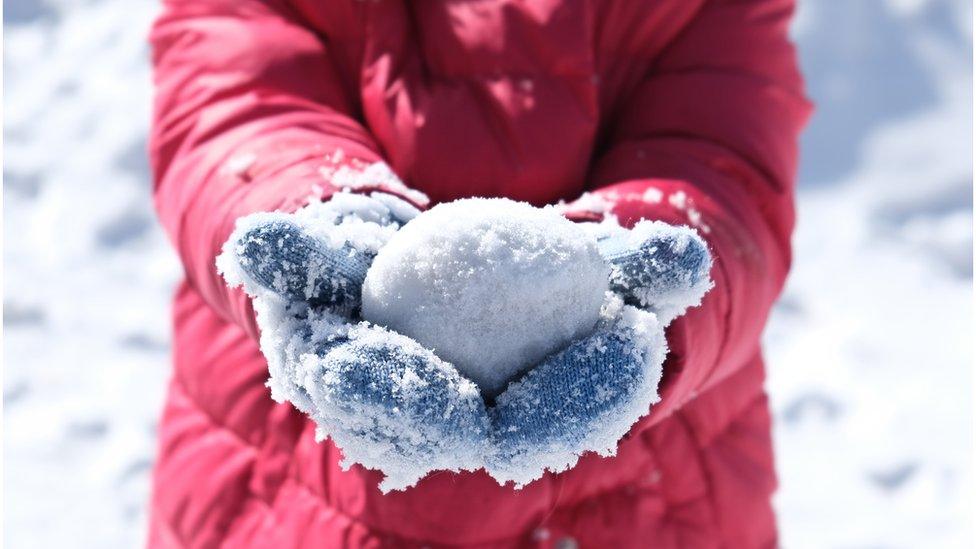
How much water is in snow?
When snow falls it can quickly cover everything in a thick, fluffy white blanket.
But did you know that while the snow may appear to be dense, it's actually made up of a very, very small amount of water.
In fact, the UK's Met Office says that it takes just one centimetre of water to make 12 centimetres of snow.
That's why when you pick up what feels like a lot of snow you can compact it down into a tiny snowball.
Do you have any other cool facts about the cold weather? Let us know in the comments.
- Published17 January 2024
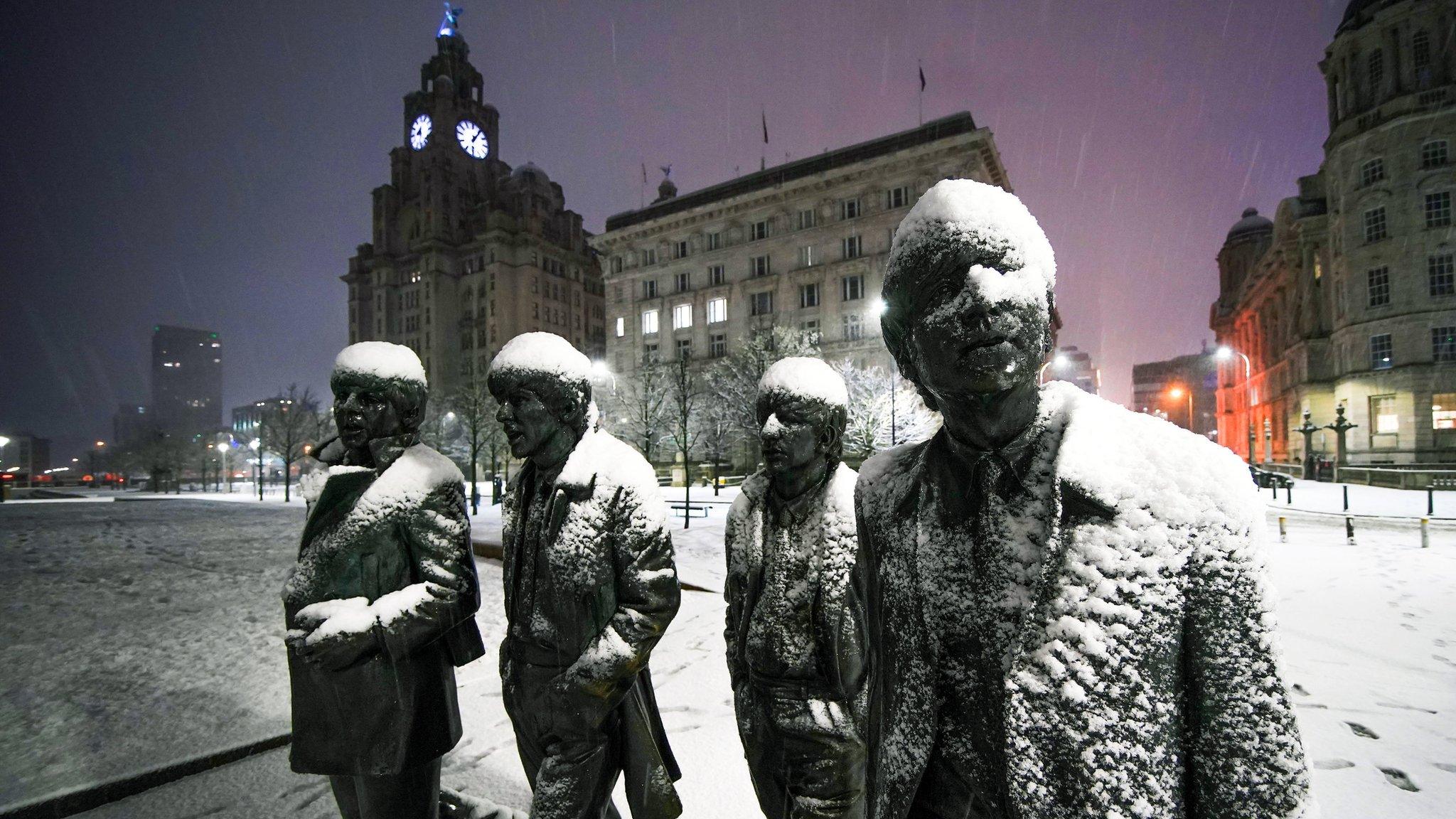
- Published13 December 2022
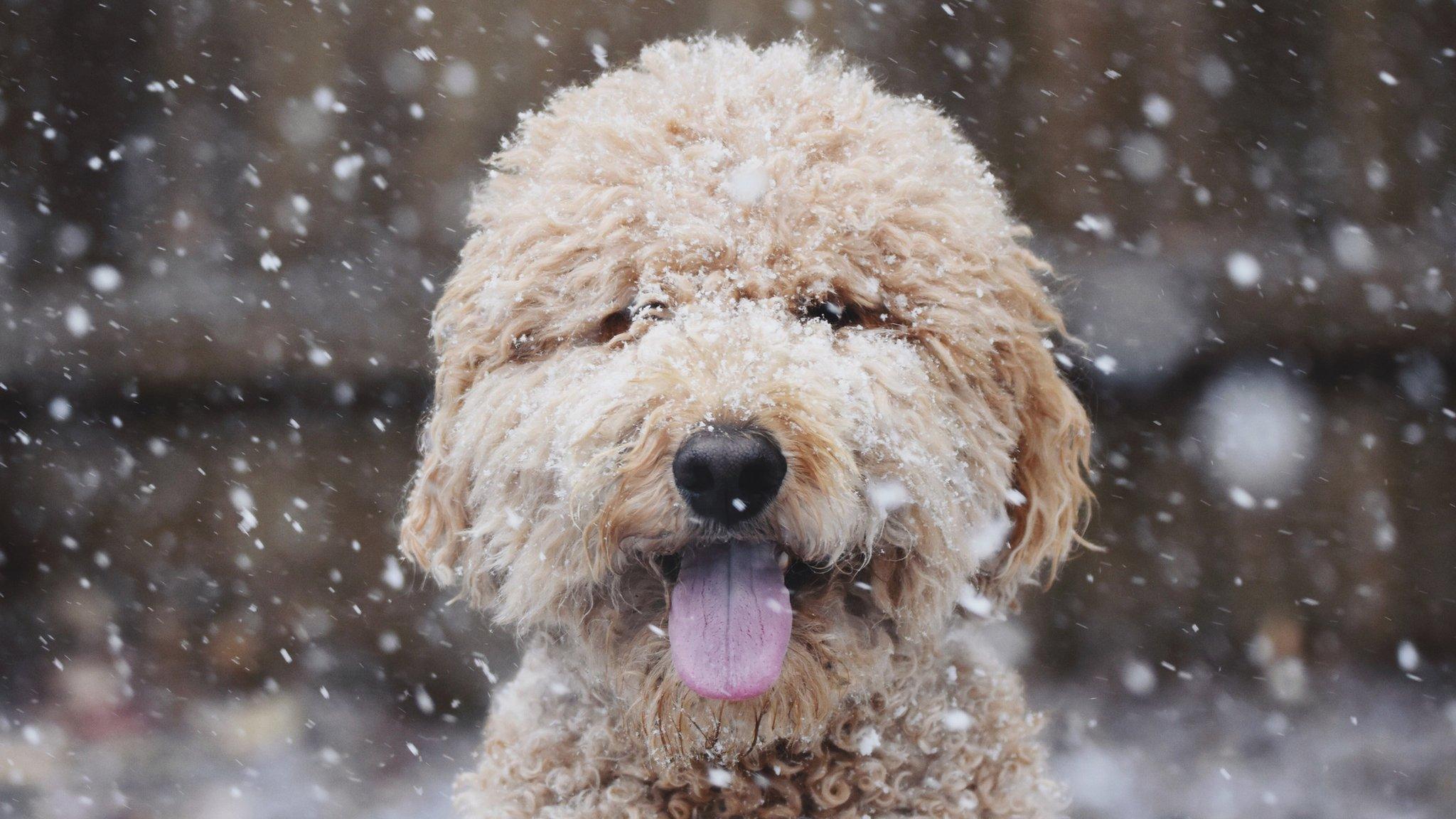
- Published13 February 2023
